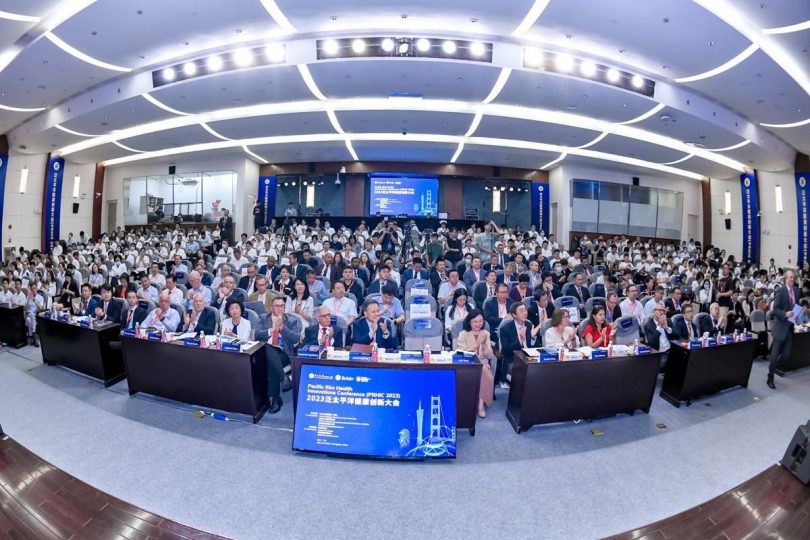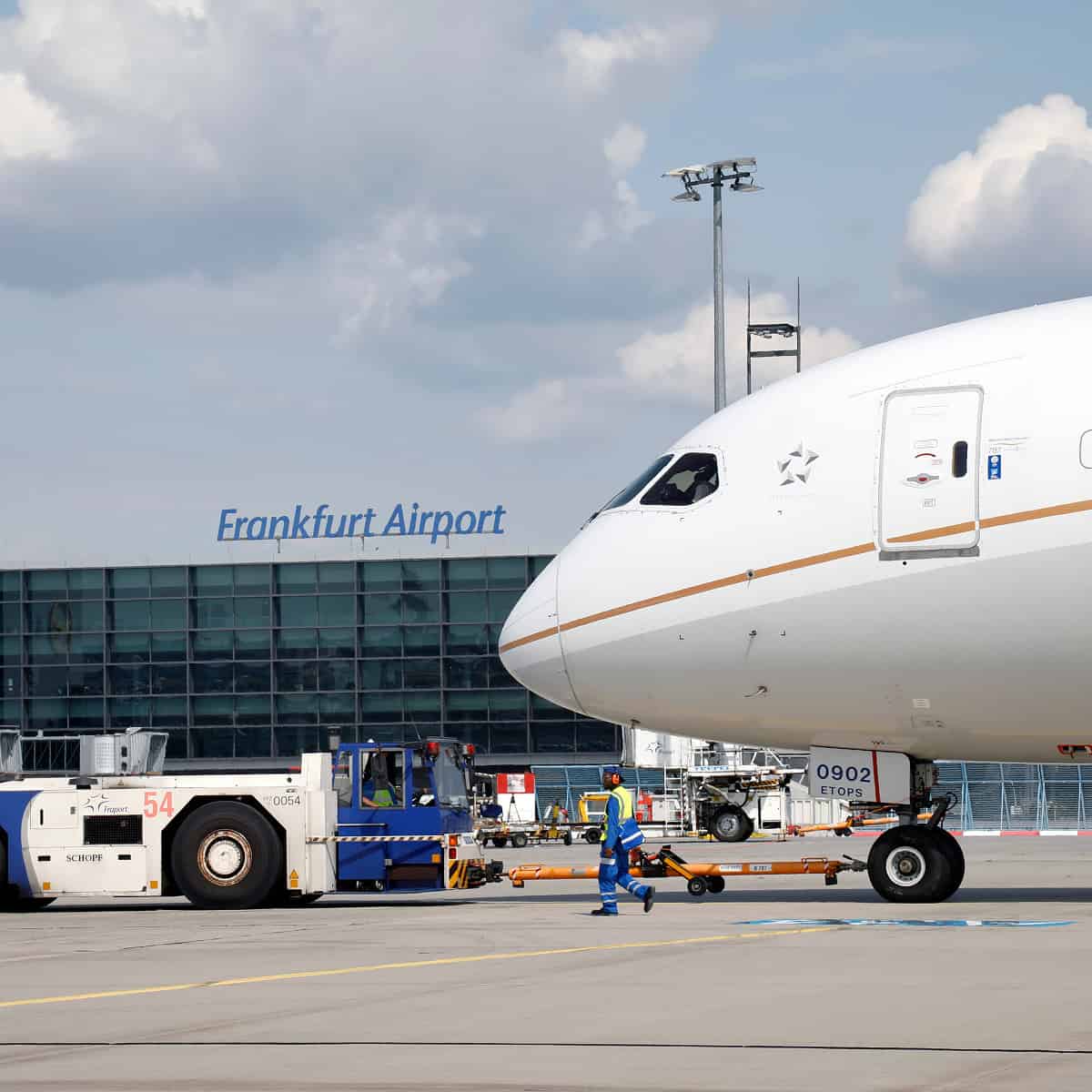Mgbe Prof Francesco Frangialli gave his warning on tourism with two wars raging, he shared an in-depth look at why tourism entered a new phase.
Listen to Francesco Frangialli. His assessment of the state of the travel and tourism industry is important and unique. Frangialli is regarded as one of the most senior experts in the world and doesn’t often speak out.
Before the recent Israel – Palestine crisis he was in China at the Sun Yat-sen University, Zhuhai. He gave this lecture to students on September 13. 2023
Ụmụ nwanyị na ndị gentlemen,
I am pleased and honored to be with you today in this prestigious university, which I had a chance to briefly visit some 15 years ago when I was in charge of the United Nations World Tourism Organization – the UNWTO. Let me express in particular my gratitude to Prof. Xu Honggang for her kind invitation.

Dear students,
I am sure that, with the excellent teachers you have, your academic knowledge of the tourism sector is much higher than mine. However, having been involved in tourism public policies for some 40 years, first at the level of my country, France, then at the international level within the UN System, I am in a position to share with you a part of the practical experience that I have acquired.
I shall use this expertise accumulated over the years to formulate a dozen of recommendations, which can guide you in your future professional life.
Njem nlegharị anya dị egwu uto kemgbe njedebe nke Agha Ụwa nke Abụọ
The best indicator to measure international tourism is the number of international arrivals – the visitors arriving and staying for at least one night in a country that is not the one where they usually live, being understood that several arrivals in different countries may be registered for one single trip abroad.
Chinese tourists who come to Europe will tell their friends and relatives that they are very familiar with England, France, Italy, and Switzerland because they have visited the four countries in one week’s time.
In fact, they have seen two single pieces of art out of the seven million gathered in the British Museum; they had a glimpse at the Tour Eiffel without climbing the 1,665 steps leading to the top (or taking the elevators) and without having lunch in its famous restaurant; they rushed through the Coliseum, looking for some gelati, without having any knowledge of the history of the ancient Rome; they saw from a long distance the Matterhorn, without climbing the peak, skiing on its slopes or even, for the most lazy ones, staying for a night in one of the traditional top hotels of the beautiful village of Zermatt!
For this strange new generation of travelers, the selfie has become an aim in itself, more important than the site or the monument visited.
Kedu ka ị ga-esi mara London n'ebughị ụzọ nọrọ awa ole na ole na ụlọ mmanya ọdịnala ma na-atọ ụtọ ụdị biya?
What about Paris without a ude kọfị on the terrace of the Quartier Latin?
Rome if you had not a taste of the dolce vita and a dinner (if possible, with a nice person) on a warm summer night in the Trastevere?
And Switzerland without enjoying a fondue accompanied by some tasty Fendanti wine when it’s snowing outside?
Emela njem nlegharị anya kpuru ìsì na ngwa ngwa.
Dear students,
the number of international arrivals worldwide has grown from 25 million in 1950 to 165 million in 1970, 950 million in 2010, to reach 1,475 million in 2019, the year before the Covid.
Europe is still, before Asia, the first region in the world for international arrivals, with 53 percent of the total arrivals in 2019. The five top destinations in the world are France, Spain, the United States, Turkey and Italy.
Mana njem nlegharị anya karịrị ihe mba ụwa.
It is estimated that domestic arrivals are 5 or 6 times more important than international arrivals. We shall speak about that important aspect when we come to COVID.
Two other indicators for measuring the economic weight of international tourism are the money spent abroad by travelers and the incomes earned by the tourism enterprises because of these visits.
Of course, their amounts are globally equal; but the breakdown between countries is very different if you consider the receipts, on the one hand, and the expenditures, on the other.
The international receipts (or expenditures) had reached their peak in 2019, with 1,494 billion US dollars – I repeat: 1,494 ijeri.
The five top earners are the United States, Spain, the United Kingdom, and Italy.
The United States and China share the first position for the expenditures of their residents abroad. They are followed by Germany, France, and the United Kingdom.
Njem nlegharị anya, akụkụ nke ọha mmadụ zuru ụwa ọnụ ọhụrụ
Ụmụ nwanyị na ndị gentlemen,
tourism has contributed to globalization as every corner of our planet, even the Antarctic, is nowadays visited by one-fifth of its inhabitants.
In 1950, the 15 leading receiving countries used to account for 87 percent of the total of international arrivals. In 2022, the current 15 leading destinations (most of them newcomers) account for just 56 percent of the total. Some 20 countries receive more than 10 million international visitors.
Tourism, because of the size it has taken in human and financial world exchanges, has started to interact on a permanent basis with other phenomena that have similarly turned global, provoking sometimes strange encounters.
Let me take the example of the winter of 2015-2016 which illustrated perfectly the interaction between international tourism and the different aspects of globalization.
Travelers did not know where to go, discouraged by the lack of snow resulting from the warm climate in the Alps, fearing terrorist attacks in various destinations of the Mediterranean, and renouncing to travel to the Caribbean islands, where an outbreak of a new disease, the Zika virus, had occurred.
Ọ ka mma ịnọ n'ụlọ n'ọnọdụ ndị dị otú ahụ!
Other images of such strange interactions could be seen recently in Greek islands, in Lampedusa, or in Malta, with holidaymakers meeting on beaches migrants arriving from Turkey, Tunisia, or Libya. F
Florida’s governor accused migrants coming from Mexico to bring COVID-19 into the State when experts consider it most likely that the surge came from tourists. At the same, this governor was campaigning to become the next president of the United States.
During the two last summer seasons, several destinations of the Mediterranean, such as Greece, Turkey, Spain, France, and Portugal, were affected by intense wildfires driven by global warming and the extreme temperatures it generates. Tourists had to flee hotels and campsites.
The same thing happened to the Greek island of Rhodes this summer.
The same countries are fighting simultaneously to reduce the flows of sub-Saharan migrants trying to sail to Europe.
Today, 2,5 percent of the world population is composed of migrants. And the migrations that will result in an inescapable manner from global warming have not yet really started!
As yesterday they did not block the radioactive cloud of Chornobyl, national borders have not been able to stop the viruses, just as they do not stop the migrants.
Ekwetala na imechi oke ga-edozi nsogbu gị.
Ụfọdụ ihe mberede nwere ike ime, na-akwụsị uto njem nlegharị anya.
Ụmụ nwanyị na ndị gentlemen,
tourism is a complex phenomenon. You won’t understand its real nature if your approach is strictly economic or only based on marketing. This is my main message for you today.
Njem nlegharị anya bụ, tupu ihe niile, ọrụ multidimensional na cross-cuting.
First of all, because it has links with other major economic sectors, such as food and agriculture, energy, transport, the construction, textile, and handicraft industries, through the intermediary consumptions it uses for generating its output.
As demonstrated by UNCTAD, for one job created in the tourism industry, two others can be generated in other economic sectors.
Secondly, as already mentioned, tourism interacts with other global phenomena:
Environment and major pollutions, climate, biodiversity, demography and migrations, health, international crime and terrorism.
This is why when we speak about tourism, we speak about geopolitics. This fundamental element explains the accidents with an external origin which may slow down or even interrupt tourism growth.
N'afọ ndị na-adịbeghị anya, nnukwu ihe mberede abụọ emewo:
the economic downturn of the second half of 2008 and the first half of 2009, because of the ẹphe egude financial crisis, and the dramatic drop of the years 2020 and 2021 as a consequence of the Covid pandemic, which appeared in China during the fourth quarter of 2019.
In 2020, the number of international arrivals went down to 407 million; 2021 was still difficult; but the rebound has been strong in 2022 with 963 million international arrivals. But the recovery is not still complete. We are not yet fully back on the track of the historical growth of international tourism.
Similarly, the international tourism receipts were divided by two in 2020 compared to 2019 because of COVID-19, and are still in 2022, with 1,031 billion, at two-thirds of their pre-crisis level.
Nkwụghachi azụ nke njem nlegharị anya ndị China bụ akụkụ nke nkọwa.
This may be checked if you compare the expenditures abroad of American and Chinese travelers. In 2019, the Chinese tourists visiting other countries used to spend twice the total spent by the Americans.
In 2022, as it has been said, the amounts were more or less the same. This is because American and European countries reopened their borders much before the Asian ones.
Let’s guess that it will be different in 2023, now that the Chinese can again discover freely the rest of the world.
Dị ka atụmatụ WHO si kwuo, ihe dị ka nde mmadụ asaa nwụrụ site na Covid, mana njem nlegharị anya ka dị ndụ!
The origins and progress of the various crises that have affected tourism are not similar.
The three major crises of the past twenty years – the 2004 tsunami, the financial crisis of 2008-2009, and the Covid epidemic 2020-2022- have been very different in nature. The order of the factors was not the same.
The 2004 mbufịt in the Indian Ocean was firstly environmental, before becoming economic and social, especially for Indonesia and Thailand.
Starting with the fall of the bank Lehman Brothers, na subprime crisis was originally financial, then economic, then became social with the boom of unemployment.
Like the SARS in 2002-2003 or the 2006 Avian flu before it, nsogbu COVID-19 was of a totally different process, almost the opposite:
First of all, sanitary, then social (and to some extent cultural) then economic, and in the end -in particular because of the cost of the recovery packages launched by governments – also financial. As a consequence, in both cases, the public debt has expanded.
Afọ iri abụọ gara aga, SARS abụrụla mmeghari maka COVID-19.
But the second time we have been facing a pandemic – a complex worldwide phenomenon. It was not only about health and safety, but also about destinations closing their borders, diplomatic tensions opposing countries, enterprises stopping their activities, unemployment growing, and political consequences arising.
Let us concentrate on the two major shocks: subprime and Covid.
In 2009, many people stopped traveling because they were preoccupied with their job or their salary.
Na 2020, ihe fọrọ nke nta ka ọ bụrụ onye ọ bụla kwụsịrị ime njem n'ihi ihe ndị yiri ya.
..but moreover, because the obstacles were too high, travel advisories and interdictions had been issued by many governments, transportation systems were at a standstill, crossing the borders had become quite impossible, and people were feeling at risk for their lives or for their health while traveling in crowded trains, buses or planes.
During the lockdown period, many people just did not have the possibility nor the desire to spend their incomes while traveling.
Restaurants, bars, nightclubs, and karaoke as well as many shops were closed, sports and cultural activities as well, and vacations were just impossible.
N'ihi ya, nkụda mmụọ achịkọtala.
Maybe more than everywhere else, extreme frustration was felt in China since the lockdown policy and the limitations imposed on both international and domestic travel have been more severe than in other countries.
As a result, huge amounts of savings have been constituted by the households. For the EU, the money that was spared represents some 4 percent of one year’s GDP.
But hopefully, this has been temporary. The skies cleared up. However, an unsatisfied demand for travel is still there.
The envy to take a break and have vacations is present more than ever. The substantial financial balances accumulated are available and can be spent immediately if attractive travel opportunities are proposed to the consumers. This is not bad news for our industry.
Dear students,
after each major crisis in the history of world tourism, the phenomenon of compensation has taken place. For this basic reason, a rebound was to take place after the Covid.
It has already started in 2022. The only questions – but they are not small! – are about its strength and the capacity of the system to transform the initial phase of recovery into a lasting expansion.
Five crises: subprime, SARS in Asia, Covid, major sea pollution in France and mbufịt
Let me illustrate and justify my assumption about the various types of crises with a few anecdotes.
Subprimes:
In the fall of 2008, we held in the UN headquarters building in New York one of the two annual meetings of the UN Chief Executives Board, a body that gathers the heads of the agencies and programs of the System as well as the chiefs of the World Bank and the IMF.
The financial crisis had started, and it was obvious from the very beginning that it would not be a simple cyclical fluctuation.
The High Commissioner for the Refugees, Antonio Guterres, now the Secretary-General of the United Nations, came to me.
He expressed the opinion that tourism, because of its vulnerability to external shocks, would be more severely affected than other branches of world trade. As a former Prime minister of Portugal, he was particularly interested in the sector I had in charge.
I thanked Guterres for his solicitude but said to him that I was not sharing his point of view.
We were facing at that stage a crisis that was exclusively of a financial and economic nature.
Not yet commercial, social, or political as the major one the world went through in the thirties.
I said to my colleague that I was moderately optimistic and that, in my opinion, the impact on the tourism activity would be limited.
This is for two reasons.
Firstly, because the crisis was likely to affect especially North America and Western Europe, and only marginally Asia; and at that time, the Asian generating markets were already fueling the engine of tourism growth.
Secondly, because the desire to have leisure and to travel was so much engrained in the minds of people the households of the upper and the middle classes -those who travel- will limit their expenditures on major items such as housing or purchasing new cars, but will not sacrifice their holidays.
What follows shows that this analysis was correct.
SARS na Covid.
In 2002-2003, with the SARS crisis, the context had been very different.
I am sorry to mention here, in Guangzhou, that the first transmission of the new virus from animal to man took place on some farm in Guangdong province, and that the poultry which was produced there was sold in this city, in the ancient food market.
As for COVID-19, the origin, the transmission mode, and the real nature of the virus were at the beginning a total mystery, an uncertainty that contributed to the panic.
On the contrary of its successor, the Covid, the SARS never went global.
Except for a few cases in Toronto, Canada, it remained an Asian episode. Despite the fact it has affected a small number of countries, its impact on the tourism flows was of a great magnitude for the Asia-Pacific region.
Dị nnọọ ka ọ dị COVID-19, tourism was both a vehicle of the disease, since it expanded from one country to another with the travelers and a victim of it.
Ọtụtụ mba Eshia, ewezuga ikpe ole na ole ebubata, enwetabeghị site na mgbasa ozi mpaghara nke SARS.
In spite of that, a huge media coverage started, not making any difference between the countries concerned.
For the media, all of Asia was contaminated. The safe destinations suffered like the others from a dramatic drop in the number of tourist arrivals.
In some aspects, the SARS was not only an epidemic but also an infodemic.
Dear students,
In a crisis situation, communication is vital,
…and the rule to be followed is that you must play openly and never hide the truth. Especially now that we have entered the era of social networks, what you would be dissimulating has every chance to come to light, with deadly consequences.
Telling the truth is not only an ethical behavior, it’s the best rewarding option.
Many examples justifying this assumption can be found in the different and sometimes opposite manners of how countries like Egypt, Tunisia, Morocco, or Turkey reacted after terrorist attacks against visitors and touristic sites.
Na 2002, mgbe la Ghriba, the ancient synagogue of Djerba, was attacked by some Muslim fundamentalists, 19 people died;
The Tunisian government tried to pretend that the explosion was accidental.
The truth was rapidly revealed, and it was a disaster for international tourism to the country.
In May this year, the same kind of attack took place against the same site, five persons were killed, but this time the authorities played the card of transparency, and there was almost no consequence.
Mmetọ oke osimiri.
As a young adviser to the French minister of tourism, I had to deal in 1978 with a major pollution coming from the mega tanker Amoco Cadiz, which leaked 230,000 tons of fuel on the Northern coast of Britain – an important tourist destination in our country.
375 kilometers of coastline were severely polluted in what has been one of the worst ecological disasters in history worldwide. We did our best to be transparent. We invited foreign journalists and tour operators from the major generating markets to visit the site of the disaster.
They saw the consequences of the awful pollution, but also the huge efforts made to clean rapidly the beaches and the rocks and to save the seabirds. We also showed to them, by a delicious sunny month of June, the coastline which was not affected, and the beauty of the interior of the region. At the end of the day, the impact on the local tourism industry was minimal.
Nwee usoro iji meghachi omume na ọgba aghara. Na-edo anya mgbe niile ma ọ bụrụ na ị ga-ekwurịta okwu na ọnọdụ mberede.
Dear students,
be aware that in troubled circumstances, the preoccupation of the media is not to report honestly the truth and objectively the reality on the ground; it’s to increase their audience. When this is combined with the ignorance and incompetence of tourism professionals, it can lead to disasters.
mbufịt – The Indonesian Myth
When on the 26th of December 2004 a violent mbufịt hit the Aceh province in the north of Sumatra, where some 200 000 deaths were registered, tourism in all of Indonesia came immediately to a standstill. S
Sumatra was not a popular destination, the victims were among the inhabitants not among the visitors, but the international media referred to Indonesia as a whole, not to one of its 18,000 islands.
With no reason, Bali, the number one tourism destination of the country, was deserted. Tour operators, including the Chinese ones, canceled immediately their tours to the paradisiac island.
Ụmụ nwanyị na ndị gentlemen,
Sumatra and Bali are located in two different seas, and the distance by air between Banda Aceh and Denpasar is 2,700 kilometers.
Ekwela ntụkwasị obi na mgbasa ozi. Ekwela ntụkwasị obi na netwọk mmekọrịta. Tukwaa obi gị (ma ọ bụ nke onye isi gị).
To contribute to the tourism recovery in the region, UNWTO held an urgent session of its Executive Council in Phuket, on the Andamans coast of Thailand, just one month after the mbufịt.
We came at night to the place where 2,000 tourists had lost their lives.
2,000 candles lit on the sand were reminding us that 2,000 souls had gone away from that beach.
On this occasion, I learned from the then-prime minister of the country, Thaksin Shinawatra, that a crisis is very often double-edged:
The Chinese word you have for “crisis” –weiji– means at the same time “disaster” and “opportunity”.
The 2004 tsunami tragedy could have been an opportunity to build more resilient and sustainable tourism.
This did not happen. Governments and companies ignored the lesson, and in spite of our recommendations, rebuilt the infrastructure too close to the sea limit.
Ọ bụrụ na ọdachi emee, lee ma a pụrụ inweta ihe dị mma na ya.
SARS:
But let’s come back to the SARS.
The aim of the World Tourism Organization was to limit the impact of the crisis on the Asian tourism industry by delivering a more balanced message than the apocalyptic one circulated by the media.
We had in front of us a sensitive decision to make: to maintain or not the session of our General Assembly, which was to take place in Beijing in November 2003.
I had established a friendly relationship with the representative of the World Health Organization in China.
By the end of May, he came to me, saying that he had the impression that the peak of the epidemic had been reached; but the information had still to be confirmed.
I called He Guangwei, the tourism minister of China, and urged him to come to Madrid to report honestly and not speaking tongue in cheek, the situation of his country to our Executive Council.
We decided to maintain our Assembly as planned, delivering thereby to the industry a message of confidence.
The Assembly was successful. The deadly virus had vanished. On this occasion, WTO decided its conversion into a specialized agency of the UN System.
Emela ihere. Egbula iwere ụfọdụ ihe egwu gbakọọ.
Ihe anyị mụtara na Covid: Diversification and Flexibility.
Dear students,
let me express the opinion that, now, with Covid behind us, a historic opportunity is offered. The result of this unprecedented sanitary crisis could be converted into an unexpected chance to move toward increased sustainability in the tourism industry.
Diversification bụ otu n'ime igodo.
More than by the virus itself, destinations have been affected by the administrative and sanitary barriers that they had put in place to protect their citizens against the disease, but also by the limitations to travel imposed by generating countries to their own residents.
Among those that were the most severely hit were the destinations highly dependent on a unique and vulnerable tourism product.
Some Caribbean islands, as well as emblematic destinations such as Venice, became aware that they could not continue living on resources generated by the stopover of huge cruise ships.
Non-sustainable forms of tourism such as cruises, long-haul air travel, business tourism, amusement parks, and high-altitude ski resorts, suffered more than the other segments of the market from the epidemic.
In crisis situations, it is important not to be too dependent on a single or on a small number of generating markets.
South-East Asian countries, such as Thailand, Vietnam, and Cambodia, in addition to the restrictions they self-imposed on visits, were hit by the absence of Chinese tourists since Chinese citizens ceased to be authorized to travel abroad and to return home afterward.
Indonesia lacked the presence of the Australians;
Canada, Mexico, and the Bahamas that of the Americans.
Destinations such as Malta and Cyprus, so much depending on the British outgoing market, were strongly affected by the interdiction to travel abroad imposed on its nationals by the UK government.
The same thing happened to the French territories in the Caribbean and the Indian Ocean.
N'aka nke ọzọ, njem nlegharị anya ime obodo gosipụtara nkwụsi ike ya siri ike n'ihi nkwado ya dị elu
In the Alps, the mid-altitude villages, like the one where I am living, which offer a broad range of four-season sports, cultural and leisure activities, resisted rather well to the shock, when high-altitude resorts felt the inconvenient to be exclusively devoted to the practice of alpine skiing, at a time when lifts had to be closed for sanitary reasons.
Offering an extensive range of diversified tourism services and multiplying the culture and sports events all year round is a way for the mountain destinations to reduce the excessive seasonality of the activity.
N'ọrụ gị n'ọdịnihu, adaberela n'otu ahịa, otu ngwaahịa, ma ọ bụ otu onye mmekọ
Flexibility is equally essential.
In troubled situations, destinations, and especially the hospitality industry, should adapt quickly to a change in the international panorama and shift to another market, if a habitual one closes suddenly.
Training programs for the staff are essential to respond to that challenge. Increased digitalization of many tasks and processes is also part of the solution.
The development of e-tourism and of the new form of accommodations booked directly online by consumers can also bring more flexibility into the picture.
Flexibility in adapting to the presence of customers from different countries, to their various purchasing power, languages, tastes, and habits, is a guarantee of security.
The most popular Spanish seaside resorts of the Costa Brava and the Costa del Sol, even if like me you find them ugly, overcrowded, noisy, and unattractive, are a model in this regard. They are able to accommodate all over the year in great numbers of visitors from different countries, groups, or cultures.
Be open to the changes in your working environment. Be flexible as much as possible. Speak not only English but also another foreign language.
Ụmụ nwanyị na ndị gentlemen,
in a few days, I shall be in a Chinese rural province I am very familiar with, the one of Guizhou.
They try to promote the region as a model destination, offering untouched natural sites, preserved landscapes, and pristine waters.
At the same time, they have recently transformed some of their best sites such as the Huangguoshu Falls and the Dragon Palace cave, into some kinds of amusement parks, illuminated with flashy colors such as pink, orange, and violet.
Chinese visitors may love it; foreign travelers in their quest for authenticity, will be disappointed.
In the north of the province, near the Chishui River, you have the strange so-called Danxia offering red and orange rocks and cliffs, where you can find tree ferns dating from the Jurassic times and even prints of dinosaurs.
They are close to overpass Steven Spielberg with a new Jurassic Park!
Never forget that tourists coming from different countries do have not the same tastes and expectations.
The targets of the promotional activities conducted by governments and local authorities in partnership with the private sector should be also easily modified if the conditions change abruptly.
I remember having seen the posters of an expensive promotional campaign from Guizhou province on the walls of the Paris metro in March 2020, at a moment when the frequentation of the underground was zero because of the lockdown, and when in any case it was impossible for French residents to fly to China!
Canceling immediately the campaign because of the waste of money it was to represent did not come to the mind of the bureaucrats.
Be ready to make hard decisions whenever necessary.
The lesson of this particular episode in the history of world tourism is clear:
In the new tourism panorama, destinations will have to look at an increased diversification of the markets on which they are depending. They will have to adapt the products they are offering and the promotion they are conducting in order to be in a position to respond swiftly to a change in the environment.
Ntughari na mgbanwe na-ejikọta ọnụ pụtara nkwụghachi.
The quest for increased resilience includes in many cases paying more attention to its own domestic market. During the Covid period, many tourism enterprises in China survived because they were able to turn to the local market. During the summers of 2020 and 2021, beaches in Italy were full of Italians, and beaches in Spain were full of Spaniards. The domestic tourists replaced the foreign travelers. This is how a real disaster was avoided.
N'agbanyeghị ụdị azụmahịa gị, echefula ahịa ụlọ.
Global warming, an imminent threat to njem
Climate change is an undisputable phenomenon that impacts all the segments of the tourism industry, but not in the same proportions and manner.
Ladies and gentlemen, tourism is not innocent in the worsening of the process: if you include air transport, it contributes between four to five percent to the emission of gases with a griin haus mmetụta.
At the Grand Barrier of Australia, the bleaching of the corals is already very advanced.
When the corals die, a large part of the submarine fauna disappears, and many tourist attractions are with them. The elevation of the level of the sea and the stronger hurricanes are a threat to the very existence of some famous beaches, as I have witnessed in the Mexican resort of Cancun.
High-mountain tourism is the first victim of that upheaval since, as demonstrated by the UN Intergovernmental Panel on Climate Change (IPCC), the increase in the average temperatures is much higher in altitude.
As stated by UNESCO: “mountains are the most sensitive ecosystems to climate change and are being affected at a faster rate than other terrestrial habitats”. Let me stress how important is this conclusion for China, a country for which 40 percent of the territory is above 2,000 meters of altitude.
It goes without saying that the powerful ski industry is vulnerable more than any other sector to the incidence of global warming.
Between 1880 and 2012, the average temperatures in the Alps have increased by more than two degrees Celsius, and the trend is accentuating.
Snow and ice, the basic raw materials for winter tourism, are becoming scarcer. In high altitudes, the cold season is shrinking, glaciers and permafrost are melting, snow lines retreating, snow cover depleting, and freshwater resources becoming scarcer.
In my mountain village in the North of the French Alps, the snow coverage is to be found 200 or 300 meters higher than at the time of my childhood (I am referring here to the very long period!). Since 1980, a ski resort like Aspen in Colorado has lost one month of winter.
A recent survey published in the review Mgbanwe ihu igwe has concluded that, in the hypothesis of an increase of 2 degrees Celsius, 53 percent of the 2234 ski resorts located in Europe, the number one region for winter sports, will suffer from a severe lack of snow. In case of an increase of 4 degrees, 98 percent of them will be affected. An intensive use of artificial snow would reduce these percentages, respectively, to 27 and 71 percent.
But artificial snow is not the panacea: to work efficiently, it needs cold temperatures; important volumes of water are required; and the energy used by the process contributes furthermore to the warming.
The drama is that the unbelievable scenario of a 3 to 4-degree increase is no longer a hypothesis.
It has become a tragic but credible scenario by the middle of the century. The IPCC’s sixth Assessment Report released in August 2021 shows unequivocally that global warming is unfolding more quickly than feared.
The Paris Agreement target of a rapid limitation to a 1.5 degree Celsius increase in the temperatures appears now as unreachable.
Ma ọ bụghị naanị ụlọ ọrụ ski bụ ihe a na-eme.
Other segments of the mountain tourism activity are suffering as well, such as those based on the existence of a remarkable biodiversity. Disappearing permafrost causes damage to the infrastructures, with dangerous rock falls threatening the alpinists.
The 200,000 glaciers, which are for some of them major tourism attractions, are melting and receding in various parts of the world, in particular the Alps, the Andes, and the Himalayas.
Twelve people were killed in July 2022 in the collapse of the Italian glacier of La Marmolada.
In short, constraints and changes resulting from global warming will force mountain tourism operators and destination management organizations to renounce some activities or implement costly mitigation and adaptation measures.
Adapting to global warming and mitigating its impact represent the major challenges facing mountain tourism – and tourism as a whole- in the foreseeable future.
Ihe ọ bụla azụmahịa gị n'ọdịnihu, cheta mgbe niile na mgbanwe ihu igwe ga-emepụta nkwekọrịta ọhụrụ maka ọrụ gị
Forwardzọ na-aga n'ihu
As a matter of fact, the demand for more sustainability resulting from this terrible pandemic meets the challenge imposed by the necessity to respond to climate change -a necessity that existed before this extraordinary period but is just strongly reinforced by its consequences.
Yesterday a disaster, COVID may now be turned today into an opportunity.
As pointed out in a 2020 UN Policy Brief, “the Covid-19 crisis is a watershed moment for ensuring a more resilient, inclusive, carbon neutral and resource-efficient future”.
In the same manner, the OECD asserted in December 2020 that
"Ọgba aghara ahụ bụ ohere iji chegharịa njem nlegharị anya maka ọdịnihu".
In this context, and as a lesson of the crisis, betting on next-door rural and cultural tourism will appear to many people as a better option than flying to long-haul beach destinations.
In the meantime, public authorities and other tourism stakeholders may come to a similar conclusion: for obtaining an equivalent final economic output, light and “smart” green tourism requires less investment than intensive city tourism or beach tourism.
Dear students,
let’s speak about the economy for a moment. As all of you know, an initial expenditure made by a visitor to a destination should not be reduced to a single act of consumption.
The money spent in a tourism enterprise – a restaurant, a hotel, a shop… – generates a flow of incomes in other tourism enterprises or in enterprises located in related sectors, through their intermediate consumptions, or, for the households, through the salaries and the profits they receive. Through a succession of concentric waves, the initial expenditure impacts the end of the whole local economy.
This is what is called, using a Keynesian expression, the multiplier effect nke njem nleta.
What’s important is that the forms of soft tourism which both mountain tourism (high altitude ski resorts excluded) and rural tourism represent, allow the existence of a higher multiplier effect, and therefore strongly contribute to job creation and alleviation of poverty.
If you stay in a five stars hotel, you will obviously spend daily much more than in a budget accommodation such as a bed and breakfast, a cottage, or a family inn; but the leakages, such as the salaries of international staff or the repatriation of benefits, will be considerable; at the end, the economic return for the local community may be higher in the second case.
Rural and mountain tourism at mid-altitude result from the same desire for experimenting with a more balanced and responsible way to enjoy leisure and culture, practice sports, and take vacations.
They are two expressions of the same quest for a more sustainable, peaceful, and inclusive society.
Capitalizing on the resilience of the domestic market, they will be the key drivers of the recovery. They represent the narrow path that will take definitively tourism to the post-Covid era.
After the shock of the pandemic, tourism is entering into a new territory.
Ụmụ nwanyị na ndị gentlemen,
let’s give the last word to Antonio Guterres, the Secretary-General of the United Nations:
“it is imperative that we rebuild tourism in a safe, equitable, and climate-friendly way”.
Antonio Guterres, Secretary General of the United Nations























